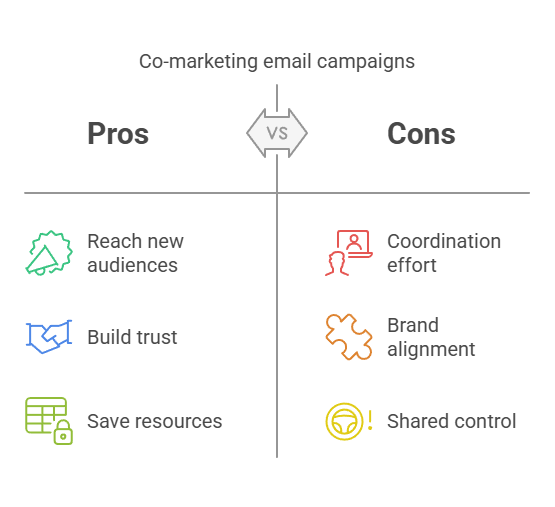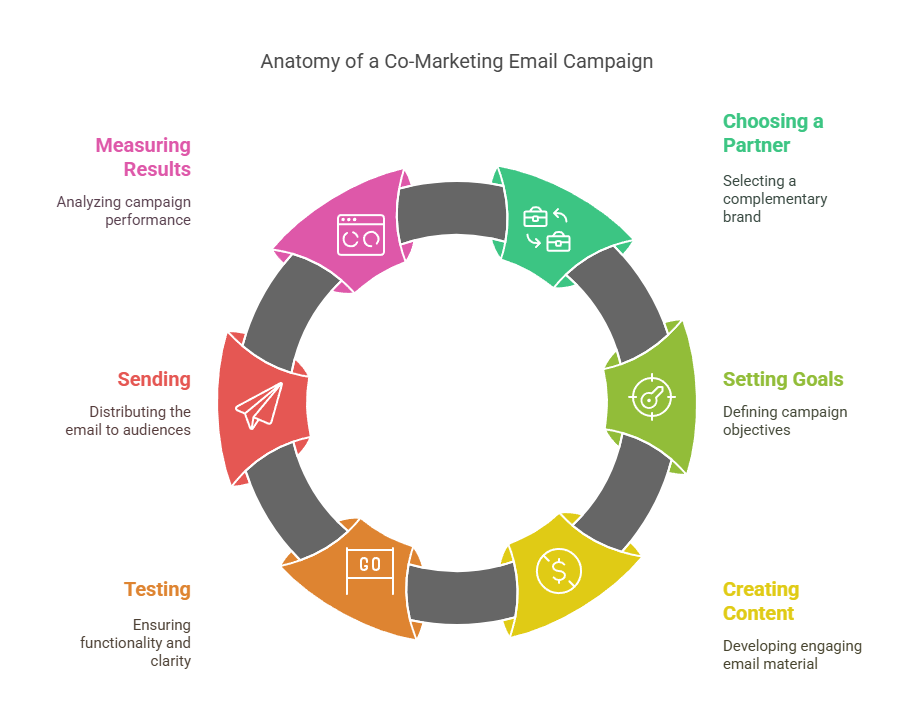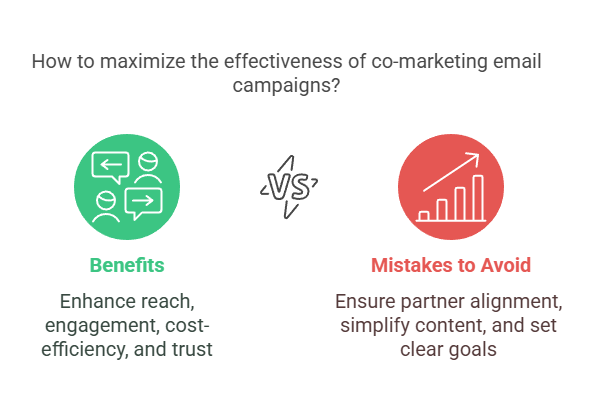Co-marketing email campaigns are a smart way for businesses to work together. They allow two or more brands to combine their strengths, reach new customers, and share resources. But what is co-marketing, and how can email campaigns help businesses grow? This article explains how co-marketing emails work and why they are useful for your business.
What is Co-Marketing?
Co-marketing is when two companies partner to promote each other’s products or services. This can happen in many ways, like sharing content, hosting events together, or running joint marketing campaigns. Co-marketing email campaigns are a great example of this.
In co-marketing emails, both brands create a message that is sent to each other’s customers. This helps both companies reach new audiences. It also builds a stronger relationship between the brands involved. The email may include promotions, product features, or helpful content related to both companies.
Why Co-Marketing Emails Are Effective
Co-marketing emails are effective for many reasons. First, they allow businesses to reach new audiences. By partnering with another company, you tap into their customer base. This is especially helpful for small businesses or new brands trying to grow their customer list.
Second, co-marketing emails increase trust. When two companies join forces, customers see that both brands support each other. This partnership often builds credibility and trust with customers. As a result, they are more likely to engage with the email and make a purchase.
Lastly, co-marketing emails save resources. Both companies can share the workload, which reduces costs for each brand. This means that both businesses can run a successful campaign without spending too much money or time.
Steps to Creating a Co-Marketing Email Campaign
Creating a co-marketing email campaign requires careful planning. Here are the key steps to make it successful:
1. Choose the Right Partner
The first step is to choose the right partner. Your partner should have a similar target audience but offer different products or services. For example, if you sell shoes, you might partner with a company that sells socks. This way, both brands complement each other, and the email offers value to the audience.
2. Set Clear Goals
Before you start designing the email, make sure you have clear goals. Do you want to increase sales, raise brand awareness, or grow your email list? Setting goals helps guide the campaign and makes it easier to measure success.
3. Create the Email Content
The next step is to create the email content. Keep the message simple and relevant to both brands. Mention both companies equally, and make sure the content appeals to the shared audience. Don’t forget to add a clear call-to-action (CTA). A good CTA might ask the reader to visit a website, make a purchase, or sign up for a newsletter.
Make sure the email design is clean and easy to read. Use images, buttons, and text that look good on both desktop and mobile devices.
4. Test Your Email
Before sending the email to your audience, test it. Send the email to a few people in your team and ask for feedback. Check that the design looks good, the links work, and the text is clear.
5. Send the Email
Once everything looks good, it’s time to send the email. Make sure you and your partner agree on the timing of the email. You may want to send it at the same time to both lists or stagger it over a few days.
6. Measure the Results
After the email is sent, track the results. Look at the open rates, click-through rates, and conversion rates. This helps you understand what worked and what can be improved next time.
Best Practices for Co-Marketing Emails
To make your co-marketing email even more successful, keep these best practices in mind:
- Keep it simple: Avoid overloading the email with too much information. Focus on one clear message.
- Use a catchy subject line: The subject line is the first thing recipients will see, so make it engaging and relevant.
- Personalize the email: Use the recipient’s name and other personalized details to make the email feel more relevant.
- Include value: Offer something of value in the email, like a discount, a free trial, or helpful information.
- Test different versions: Try A/B testing different subject lines, CTAs, and designs to see what works best.
Examples of Successful Co-Marketing Email Campaigns
Many successful co-marketing email campaigns have been run by major brands. Here are some examples of how different companies have used email marketing to promote each other’s products.
- Spotify and Uber: In this partnership, Uber drivers could offer free Spotify playlists to their riders. Both companies benefited by increasing user engagement and attracting new customers.
- Airbnb and Flipboard: Airbnb partnered with Flipboard to offer personalized travel recommendations in Flipboard’s email newsletters. This helped both companies reach an audience that was interested in travel.
By looking at these examples, you can see how a co-marketing email campaign can work for different industries. The key is to find a partner that shares your values and target audience.
The Benefits of Co-Marketing Email Campaigns
There are many advantages to running a co-marketing email campaign. Some of the most important benefits include:
- Increased reach: By partnering with another company, you can expand your reach to a larger audience. This can lead to more customers and more sales.
- Better engagement: Co-marketing emails are more likely to be opened and clicked because they provide value to the recipients. People enjoy learning about new products or services that are related to their interests.
- Cost savings: By sharing the cost of the campaign, both companies can save money on design, promotion, and email tools.
- Brand trust: When two brands work together, customers trust the brands more. They see that both companies support each other, which builds trust and credibility.
Co-Marketing Email Mistakes to Avoid
While co-marketing email campaigns can be highly effective, there are a few common mistakes you should avoid:
- Not aligning with the right partner: Choose a partner with a similar target audience and values. If the partnership feels forced, customers will notice and may not respond well to the email.
- Overloading the email with too much information: Keep the message simple and to the point. Don’t try to include too many offers or too much information in one email.
- Not having clear goals: Without clear goals, it’s hard to measure success. Make sure you know what you want to achieve before you send the email.
Co-Marketing Email FAQs
1. What is co-marketing email?
Co-marketing email is a type of email campaign where two or more brands work together to promote each other’s products or services to their respective audiences.
2. How can co-marketing email benefit my business?
Co-marketing email helps your business reach new customers, increase trust with your audience, and save resources by sharing the workload with your partner.
3. What should I include in a co-marketing email?
Your co-marketing email should include a clear message, relevant content for both brands, and a strong call-to-action. You can also include promotions, discounts, or helpful information.
4. How do I measure the success of a co-marketing email campaign?
You can measure the success of a co-marketing email campaign by tracking metrics like open rates, click-through rates, and conversion rates. These numbers tell you how well the campaign performed.
5. Can co-marketing emails work for small businesses?
Yes! Co-marketing emails can be very beneficial for small businesses. By partnering with another brand, you can expand your reach and attract new customers without a large marketing budget.
Final Thoughts
Co-marketing emails are a powerful tool for businesses looking to grow. By partnering with the right company, you can reach new audiences, increase engagement, and save money. With the right strategy, co-marketing emails can become a key part of your marketing efforts.




